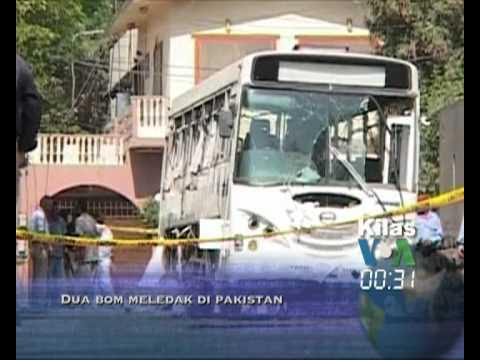What caused the Rwandan Genocide? - Susanne Buckley-Zistel
Summary
TLDRIn 1994, Rwanda was torn apart by a brutal genocide that claimed the lives of nearly 800,000 people in just 100 days. The roots of the violence stemmed from decades of colonial rule, which deepened ethnic divisions between the Tutsi and Hutu populations. The genocide was sparked by the assassination of the Hutu president, leading to systematic killings orchestrated by Hutu extremists. In the aftermath, Rwanda struggled to achieve justice for the perpetrators. The gacaca court system, a traditional community-based approach, was used to expedite trials, convicting over 1.7 million individuals. The legacy of the genocide remains a painful chapter in the nation's history.
Takeaways
- 😀 Rwanda experienced a brutal 100-day genocide in 1994, where over one-tenth of the country's population was killed.
- 😀 The conflict’s roots were in colonial-era divisions, with Belgian colonizers enforcing ethnic divisions between the Tutsi, Hutu, and Twa communities.
- 😀 Belgians portrayed Tutsi as elite rulers and Hutu as common farmers, which exacerbated political tensions between the groups.
- 😀 A Hutu revolt in 1959 and a subsequent Hutu government in the 1960s further alienated the Tutsi, leading to violent conflict.
- 😀 After a civil war from 1990 to 1993, a peace agreement failed to quell the tensions, culminating in the genocide in 1994.
- 😀 Following the assassination of the Hutu president, the Hutu-led government orchestrated mass killings, targeting Tutsi civilians and political opponents.
- 😀 Over 1 million Hutu civilians were coerced or joined the militias that carried out the genocide, with widespread sexual and physical violence.
- 😀 International bodies like the UN failed to intervene effectively, leaving Tutsi civilians without protection during the violence.
- 😀 The genocide ended when the Tutsi-led Rwandan Patriotic Front (RPF) seized control of the country, leaving around 800,000 dead.
- 😀 Post-genocide justice efforts included the establishment of a UN tribunal and Rwanda’s use of traditional gacaca courts to prosecute thousands more swiftly.
- 😀 The gacaca court system, adapted for genocide trials, faced criticism for its lack of formal legal processes, intimidation of witnesses, and limited scope in addressing Hutu casualties during the violence.
Q & A
What was the Rwandan Genocide, and how long did it last?
-The Rwandan Genocide was a horrific campaign of mass murder that occurred in 1994, lasting for 100 days. During this period, over one-tenth of Rwanda's population was killed, primarily targeting the Tutsi ethnic group by Hutu extremists.
How did colonial powers contribute to the ethnic divisions in Rwanda?
-Colonial powers, particularly the Germans and Belgians, enforced ethnic divisions by classifying people based on ethnicity and creating a public narrative that portrayed Tutsi as elite rulers and Hutu as ordinary farmers. This divide and rule policy intensified political hostility and resentment between the groups.
What role did propaganda play in the lead-up to the genocide?
-Propaganda, especially spread by Hutu extremists, fueled ethnic animosity by blaming Tutsi for Rwanda’s economic, social, and political problems. This narrative contributed to the polarization and violence that escalated into the genocide.
What sparked the renewed conflict in 1994?
-The renewed conflict in 1994 was triggered by the shooting down of a plane carrying the Hutu Rwandan president, which led to the Hutu government’s decision to launch a deadly response, aiming to stay in power by targeting Tutsi civilians.
What was the international community's response to the Rwandan Genocide?
-The international community, including the UN, failed to intervene effectively during the genocide. Despite Tutsi civilians seeking refuge in places like churches and schools, no outside party came to their aid, and UN peacekeepers were instructed to abandon them.
How many Rwandans were killed during the genocide?
-Around 800,000 Rwandans were killed during the genocide, and a significant portion of the Tutsi population was wiped out.
What challenges did Rwanda face in prosecuting the perpetrators of the genocide?
-After the genocide, there were approximately 120,000 individuals awaiting trial, leading to overcrowding and poor conditions in prisons. The Rwandan government recognized that it would take 100 years to prosecute all accused individuals in traditional courts.
What is gacaca, and how did it help in the post-genocide justice process?
-Gacaca is Rwanda’s traditional community-based justice system, used to resolve interpersonal conflicts. The government adapted this system for the genocide trials, allowing faster trials by local lay judges without professional lawyers, aiming to expedite the process of justice.
What were the four categories of genocide crimes tried in gacaca courts?
-The four categories of genocide crimes in gacaca courts were: masterminding the genocide and committing acts of sexual violence, participating in the killings, committing physical assault, and destroying Tutsi property. Different penalties were assigned based on the severity of the crime.
What were some of the criticisms of the gacaca courts?
-Criticism of the gacaca courts included the intimidation of witnesses, the reluctance of some people to accuse their neighbors, and the fact that the trials only addressed crimes involving Tutsi victims, ignoring Hutu casualties during the genocide and civil war.
Outlines

This section is available to paid users only. Please upgrade to access this part.
Upgrade NowMindmap

This section is available to paid users only. Please upgrade to access this part.
Upgrade NowKeywords

This section is available to paid users only. Please upgrade to access this part.
Upgrade NowHighlights

This section is available to paid users only. Please upgrade to access this part.
Upgrade NowTranscripts

This section is available to paid users only. Please upgrade to access this part.
Upgrade NowBrowse More Related Video
5.0 / 5 (0 votes)





